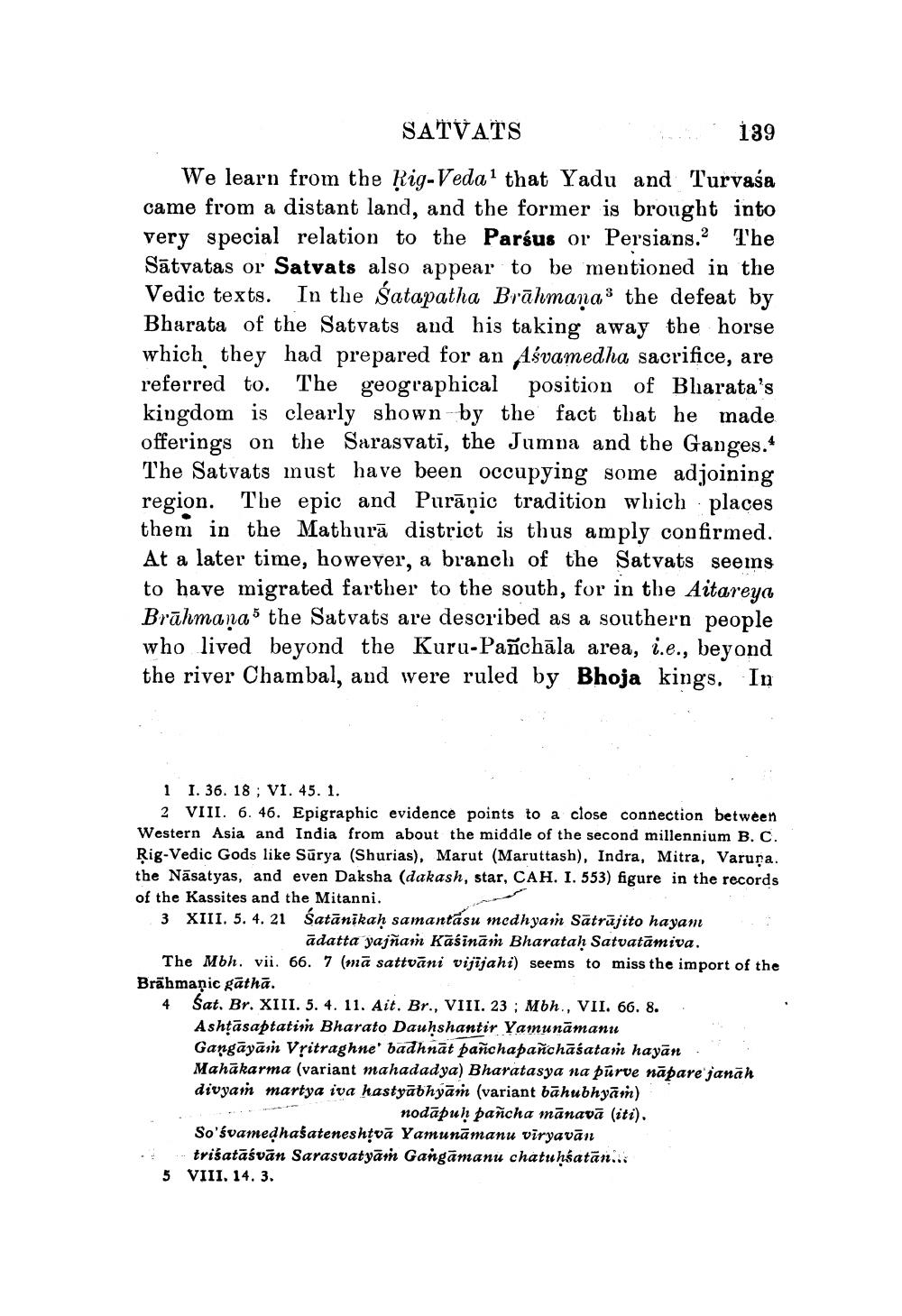________________
SATVATS
139
We learn from the Rig Vedal that Yadu and Turvaša came from a distant land, and the former is brought into very special relation to the Paríus or Persians. The Sātvatas or Satvats also appear to be mentioned in the Vedic texts. In the satapatha Brāhmaṇas the defeat by Bharata of the Satvats and his taking away the horse which they had prepared for an Aśvamedha sacrifice, are referred to. The geographical position of Bharata's kingdom is clearly shown by the fact that he made offerings on the Sarasvati, the Jumna and the Ganges. The Satvats must have been occupying some adjoining region. The epic and Purāņic tradition which places them in the Mathurā district is thus amply confirmed. At a later time, however, a branch of the Satvats seems to have migrated farther to the south, for in the Aitareya Brāhmanas the Satvats are described as a southern people who lived beyond the Kuru-Pañchāla area, i.e., beyond the river Chambal, and were ruled by Bhoja kings. In
1 I. 36. 18; VI. 45. 1.
2 VIII. 6. 46. Epigraphic evidence points to a close connection between Western Asia and India from about the middle of the second millennium B. C. Rig Vedic Gods like Sürya (Shurias), Marut (Maruttash), Indra, Mitra, Varura. the Nāsatyas, and even Daksha (dakash, star, CAH. I. 553) figure in the records of the Kassites and the Mitanni. 3 XIII. 5. 4. 21 Satānikah samantásu medhyam Sātrājito hayam
ādatta yajñam Kašinām Bharatah Satvatāmiva. The Mbh. vii. 66. 7 (mā sattvāni vijijahi) seems to miss the import of the Brāhmanic gāthā.
Sat. Br. XIII. 5. 4. 11. Ait. Br., VIII. 23 ; Mbh., VII. 66. 8. . Ashțāsaptatii Bharato Dauḥshantir Yamunāmanu Gangāyāın Vritraghne' badhnāt pañchapañchāśatam hayān . Mahākarma (variant mahadadya) Bharatasya na pūrve năpare janäh divyam martya iva hastyābhyām (variant bāhubhyām)
nodapuh pañcha mānavā (iti). So'śvamedhasateneshțvā Yamunāmanu viryavān
trišatāśvān Sarasvatyāın Gangāmanu chatuḥšatān... 5 VIII. 14. 3.




